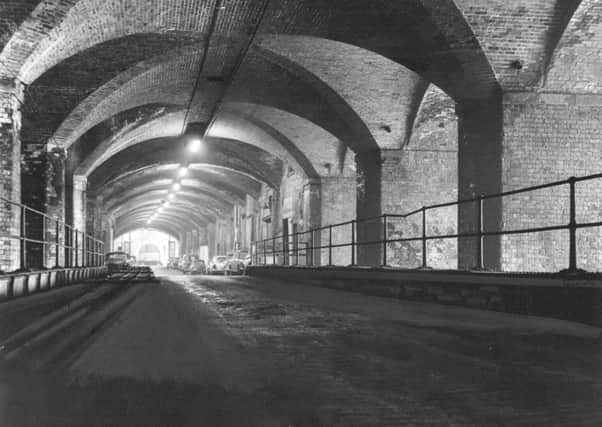In Pictures: The strange and fascinating secrets hidden underground in Leeds


Rumours about secret spaces under the streets of Leeds may easily be dismissed as far-fetched urban myths, but a hidden side to the city actually does exist. From air raid shelters and nuclear bunkers to abandoned subway systems, there are a startling number of mysterious underground areas which have long been forgotten.
One of the largest (and most impressive) hidden spaces can be found two storeys below the famous Queen’s Hotel, where a network of stone chambers and interconnecting tunnels sit quiet and abandoned in the darkness. Some passageways extend beneath Leeds railway station, while others lead off towards City Square and the banks of the River Aire, and an old boiler room houses forgotten furniture, paintings and grand chandeliers.
The railway under the railway
Advertisement
Hide AdAdvertisement
Hide AdThousands of commuters pass through Leeds railway station every day, but few of them know that the existing station sits directly on top of another. The city’s first railway site was Wellington Station, which opened permanently in 1850 on top of the arches of the River Aire. The adjacent New Station, was built later, in 1869. These two hubs were merged in 1930 to form the main city station which we use today, but there was also a third site, known as Central Station. Central Station remained in use until the 1960s, after which it was closed and demolished in 1967 to make way for the current station. The new structure was rebuilt above Central Station, hiding its large network of platforms, corridors, old post rooms, toilets and offices from view. Despite no evidence of its existence remaining above ground, the remnants of the original station do still exist 80 yards below today’s current site, although it is now a gloomy labyrinth of eerie silence – a stark contrast to the space’s former life as a busy commuter hub.
Shelters and bunkers
Whisperings of a secret air raid shelter hiding in the pretty parklands of Woodhouse Moor are actually rooted in fact, as a shelter does still exist here – and it is still in very good condition for its age. The shelter was constructed in 1938 as bomb threats grew, and the parkland site offered the public easy access in the event of an emergency. Today, the raised grassy mound of the shelter can still be seen, as well as the concrete slabs on the surface which indicate escape routes. This shelter is just one of many which are still in existence in the city. Other known bunker sites include Soldiers Field in Roundhay Park, Potternewton Park, Cross Flatts Park in Beeston, and Chapel Allerton Park.
A surviving subway system
Leeds might not have underground trains, but the Merrion Centre is home to an abandoned subway system – a collection of underpasses which were built to allow visitors to access the shopping centre without crossing the busy main road. While these tunnels are no longer in use and have been closed off for some time, they can still be spotted from the north-west side of the centre, close to the back of Morrisons, with the main tunnel entrances clearly visible from Woodhouse Lane.